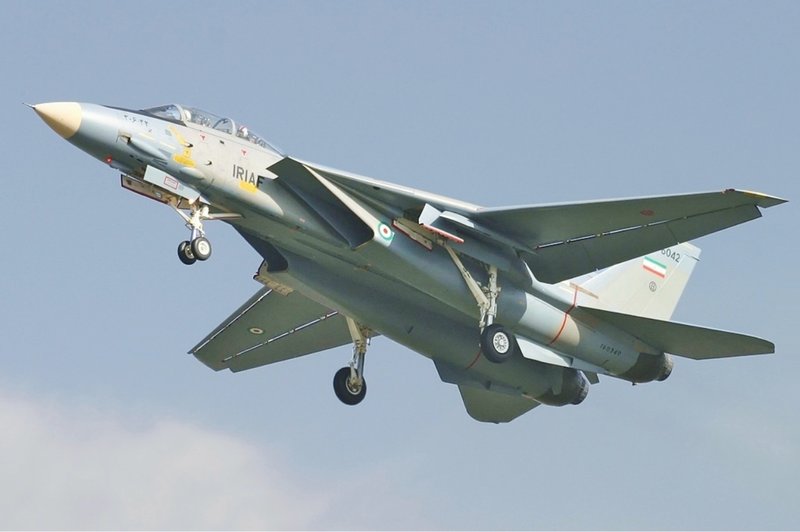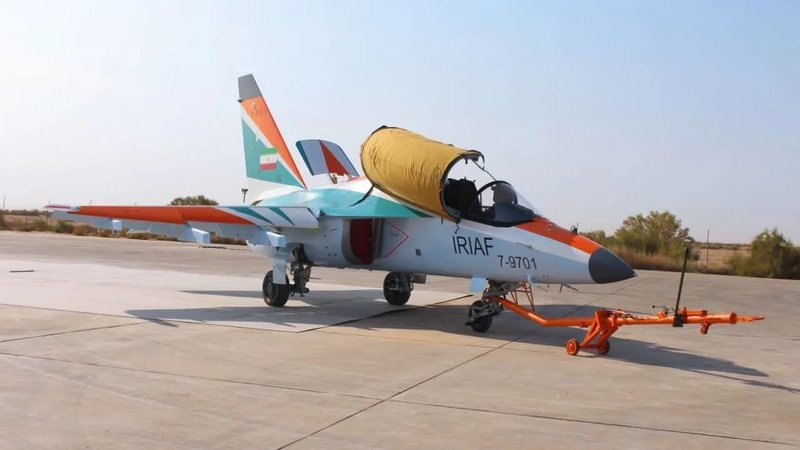Iranian air power: 1980s relic or cause for concern?
Decades of embargoes mean Iran’s combat air fleet is a shadow of its pre-revolutionary self. As conflict in the Middle East once again dominates the headlines, an analysis of the Iranian Air Force’s true capability is timely.
The 1980s war between Iran and Iraq is a classic example of a forgotten conflict. Yet above the heavy fighting on the ground a highly sophisticated air war was waged by some of the most modern fighters then in service: Iranian F-4s, F-5s and F-14s fought Iraqi Migs, Sukhois and Mirage F1s. Both sides were supported by modern C2 and air defence systems... Continues below
Newsletter Sponsors:

Above: While Iran’s remaining F-14s are clearly no match for an F-15 or F-35, they may yet be effective over home territory when supported by a wide and deep air defence system. (Photo: Shahram Sharifi/Wikimedia Commons)
The Iranian success here arguably came from the quality of its aircrews. Trained under the Shah’s regime and subsequently punished for this by the Islamic Republic, they nevertheless fought with a skill and professionalism that today is highly regarded. A question remains as to whether their successors can match such capability.
Taking matters up to date, Russian performance in Ukraine has underlined the potential to overestimate as well as underestimate a military. As the current presumed adversary for US-allied nations in the MENA region, Iran’s air power capability is clearly of critical importance should a wider conflict begin.

However, despite the proud legacy from the 1980s, the force is now likely in a desperate position. Few new aircraft have arrived since ‘refugee’ Iraqi examples in 2003. The polyglot fleet – little changed from the late 20th century – has been slowly starved of spares. Even were Tehran able to procure on the open market, supply obsolescence would be a critical drag on serviceability.
Despite effort at indigenous development, of which the only marginal success is the Saeqeh, essentially a modified Northrop F-5, little modernisation has been achieved. Nevertheless, operating as it likely would over friendly territory and with the local maritime geography having significant impact on military operations, what could the Iranian Air Force do and how effective might it be?
The force has long been on a semi-war footing, operating against both asymmetric and insurgent forces as well as training for a potential conflict in the west. The Syrian situation has provided continued combat experience while a post-American Iraq has reduced pressure to the north, meaning that most effort has been focussed on a maritime conflict together with interception of a sudden – possibly Israeli – raid against strategic targets.
Furthermore, in comparison to GCC forces, Iran’s aircrew are arguably far more experienced.
The fleet itself remains centred around the aging F-14s, which thanks to their radar and kinetic performance are the most potent fighter-interceptors and would play a C2 role as well. The last of the Iran’s AIM-54 Phoenix missiles have likely been expended or decommissioned, but the aircraft appear to have been modified to use a variety of weapons.

The other ‘high-end’ combat aircraft would be MiG-29, although these are relatively old models and hence lack the newer sensor and electronic systems found on their Russian equivalents.
Both types have relatively large radar cross-sections (RCS) and hence would be relatively easy to detect for a more modern fighter with AESA radar. However, both have strong basic performance and are assisted by a wide and deep ground-based air defence system that would reduce to a degree the dependence on their obsolescent radar sets.

Above: Iran is now receiving Yak-130 trainer/light attack aircraft from Russia. While a modern design, they have limited combat capability. (Photo: Iranian Armed Forces)
Even before the current conflicts in Ukraine and Gaza, Iran had been in extensive dialogue with Russia concerning new fighter aircraft. The first Yak-130 light jets have now arrived and represent the most modern assets available, albeit with limited combat capability.
More useful would the possible sale of Su-35s, a type regarded as Russia’s most potent multi-role combat type and one able to carry the latest generation of weapons.
In terms of a likely scenario focussed on air support of maritime operations, the air force retains a large stock of anti-shipping missiles which are arguably its most capable weapon. Any probable conflict would involve collaborative operations with naval and ground forces in a defence of Iran’s seaboard.

While not equal to more modern weapons available to likely adversaries, systems such as the Kh-55 cruise missile remain in front-line service with Russia and China and this is generally regarded as potent when deployed under optimal conditions. Defensive operations in a narrow strait are almost an ideal environment for its use.
The Iranian Navy’s penchant for small-boat operations, alongside such anti-shipping operations from the air and ground-launched missiles, represent – if not the most modern of forces – then certainly a threat to smaller naval vessels lacking the defensive systems of a US carrier battle group.
Barring a full-scale war, skirmishes in the Gulf between Iran and Arabian militaries may prove costly for the latter.

Trillium Engineering specializes in the design and production of gimballed imaging systems for manned and unmanned aircraft. See Details.
It would be easy to dismiss the Iranian Air Force as essentially a 1980s relic. Certainly, compared to the F-35s and F-15s it might face, it is at a significant disadvantage. Yet in a conflict, it would probably be fighting over home soil and with strong interservice support. It would also not likely suffer from restrictive of rules of engagement that might impede an opponent.
Aerial warfare often brings surprises and many capable militaries have suffered episodes where their supposed strengths have been negated by a particularity of circumstances. If the corporate experience from previous decades remains and the Iranian military can fight to its strengths, any potential aggressor may discover that what appears to be an easy target has some tricks up its sleeve.
Don't want to miss out on future Decisive Edge content? Make sure you are signed up to our email newsletters.














